People are used to traveling by flight recently, especially in a big city. However, with the well-developed high-speed train system in China, we can offer you a unique way of traveling. If you are kind of tired of the sky and clouds outside the window, our 15 days China train tour is a perfect choice for you. The first two stops of our tour are both cities with long history-Beijing and Xi’an. You can enjoy the attractive history of several ancient Chinese dynasties, and you can have a taste of traditional Chinese dishes. Then we will move to Chongqing and get on the Yangtze River cruise ship. You can play Tai Chi on the cruise ship and enjoy the Three Gorges with stunning views. After the cruise, we will move to Shanghai and Guilin, and they are both charming cities in different ways. After Guilin, we will take our Guilin-Hong Kong train tour, we can assure you will spend your day most joyfully in Hong Kong. By taking China’s high-speed train and cruise, we will spend 15 amazing days together in China.

According to the traveling schedule, you will arrive in Beijing today. When you walk out, you will see your guide waiting for you with the name sign. I believe you can feel the unique enthusiasm of Chinese people at that moment. Being the heart of the People’s Republic of China, Beijing boasts a history of more than 3,000 years. In Beijing, you will experience a harmonious mixture of history and modernity. We will start our journey tomorrow, and you will be transferred to the hotel for a good rest today.
In the morning, we will visit Tian’anmen Square as our first stop. Located at the center of Beijing city, Tiananmen Square is a remarkable landmark. The Tian’anmen Gate Tower, Monument to People’s Heroes, Great Hall of the People, and Chairman Mao Zedong Memorial Hall are all around it. And the solemn national flag-raising ceremony is held here every morning.
Passing through Tian’anmen Square, we will enter the Forbidden City (closed each Monday), also known as the Palace Museum, where lived 14 emperors in the Ming Dynasty (1368-1644) and 10 emperors in the Qing Dynasty (1636-1912). Emperor Kangxi (1654-1722) ascended the throne at the age of 8. He has reigned the Qing Dynasty for 61 years and was the longest-reigning emperor in Chinese history. Emperor Kangxi lived 68 years old, which was considered longevous at that time. Why can he live so long? Emperor Kangxi was very particular about what to eat. Although the emperor’s recipes were varied, Emperor Kangxi had always advocated vegetarianism. He paid great attention to health preservation and never abused tonics. Therefore, he lived a long life.
After lunch, we will pay a visit to the Temple of Heaven. It was built in 1420 after Emperor Yongle of the Ming Dynasty moved the country’s capital to Beijing. At that time, it was a special building for the emperors of the Ming and Qing Dynasties to worship heaven, pray for good harvest, bless the union of the country, and so on. The north side of the Temple of Heaven is round and the south side is square. The design reflects an ancient Chinese thought of “the heaven is round and the earth is square”. The entire Temple of Heaven is divided into the inner part and outer part. The well-known buildings such as the Hall of Prayer for Good Harvests and the Echo Wall are located in the inner part. The Echo Wall can transmit sound. As long as you speak against the wall, your voice can be heard by another one who is standing against the wall, even if you are separated for forty or fifty meters. That is amazing, right? So, come and experience it by yourself.
And then, we will drive northwest for about one hour (25KM) to visit the Summer Palace. As the largest and most well-preserved royal garden in China, it greatly influences Chinese horticulture with its famous natural views. It also has long been recognized as “The Museum of Royal Gardens”. Entering the gate and bypassing the main hall, we will visit the famous Long Corridor, which is more than eight hundred meters long. Colorful and unique paintings depicting people, landscapes, and ancient mythologies decorated each beam. When visiting the Long Corridor, we can feel the cozy breeze blowing from Kunming Lake on the left. After walking through the Long Corridor, we will come to the foot of Wanshou Mountain. A three-story building in the shape of an octagonal pagoda stands halfway up the mountain. This is the famous Tower for Incense of Buddha. Besides, Cloud Dispelling Hall and other delicate buildings are around here.
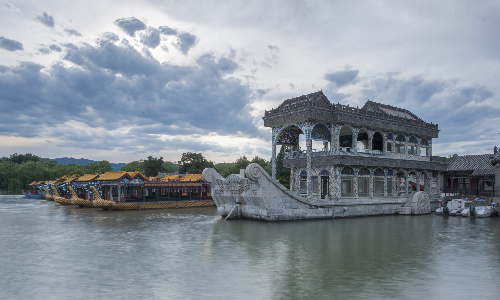
The attraction we are going to visit today is the Ming Tombs. We will drive northwest for about 1 hour (44KM) to get there. The Ming Tombs are the best-preserved ancient emperor tombs around the world. According to history, there were 16 emperors in Ming Dynasty. However, there are only 13 tombs here. Do you know the reason? When the Ming Dynasty was founded, the capital was determined to be Nanjing, so Emperor Zhu Yuanzhang, the first emperor of the Ming Dynasty, was buried in Nanjing. After his grandson, Zhu Yunqi was taken from the throne by Zhu Di, he was nowhere to be found, and was unable to build a tomb. And then the Emperor Jingtai, who fought for the throne with his brothers was finally demoted and lost the qualification to build a royal tomb. Therefore, there are only 13 emperors buried in the Ming Tombs today.
After lunch, we will drive northeast for about 1 hour (42 kilometers) to the Mutianyu Great Wall. The Mutianyu Great Wall was built on the site of the Northern Qi (550-577) Great Wall in 1368. It has been kept in a good condition through the efforts of generations of Chinese people. Where the Mutianyu Great Wall lies is very steep, so it was chosen to build the Great Wall as the military hub to guard Beijing, the capital of the Ming dynasty, from being invaded. There was a beacon tower almost every 100 meters. Therefore, even if it has now lost its military defense function, we can still feel the traces of history from these remaining beacon towers. And there are two ways for you to have a closer look at the Great Wall. On the one hand, you can go up and down the Great Wall by cable car. On the other hand, a chairlift will bring you up, and then a toboggan will bring you down. No matter what kind of ways you choose, you can appreciate the majestic Great Wall and the beautiful scenery of northern China here.
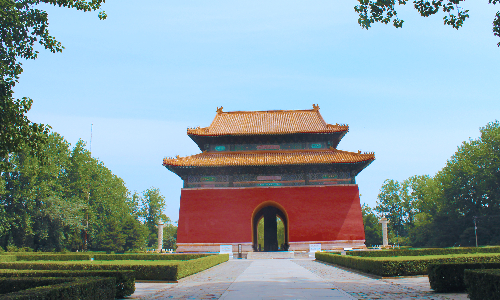
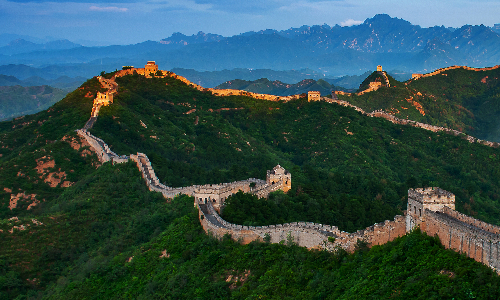
 Xi’an
Xi’an Today will be our last day in Beijing. We are going to visit Hutongs by rickshaw. Beijing Hutongs originated in the Yuan Dynasty, is an important part of Beijing culture. Compared with the rows of high-rise buildings, the tortuous Hutongs and peaceful courtyards involve the longer history of Beijing. Sitting on a rickshaw and roaming along the Hutongs, you will see the local life scenes of old Beijingers. Some of them are chatting on the road, some are playing chess and some people are lying on the rocking chair and enjoying the sunlight. Unconsciously, you have deeply experienced the Beijing Hutongs culture when the rickshaw is moving forward. And then we will stop in a Beijing Siheyuan (quadrangle courtyard) in the Hutong and pay a family visit. Beijing Siheyuan is a kind of Chinese traditional dwellings, with the main house and east and west wing rooms surrounding the middle courtyard. It has a history of more than 700 years. The host will tell you more interesting stories about Hutong.
After lunch, our journey in Beijing comes to an end. As you know, this route provides a unique way to travel, so we will head to Xi’an by the estimated China high-speed train G87 14:00/18:19. Believe me, on China high-speed train, you will feel a bullet-like speed, and at the same time, this short trip on the train will be very comfortable. Our guide will meet you at Xi’an Railway Station and transfer you to the hotel. As one of the world’s four ancient civilizations (Xi’an, Rome, Cairo, Athens), Xi’an is blessed with various tourism resources and is a famous historical city in the world. More than 120 royal tombs are surrounding Xi’an. Do you want to visit these tombs and learn more about the stories of Chinese emperors? Our tour guide will guide you to explore the mysterious city in the next few days.
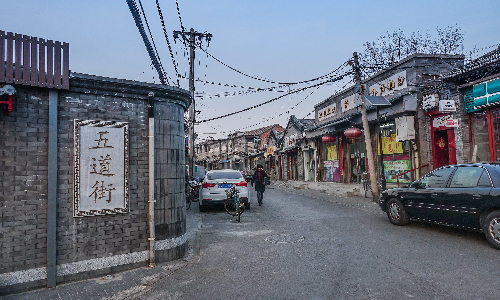
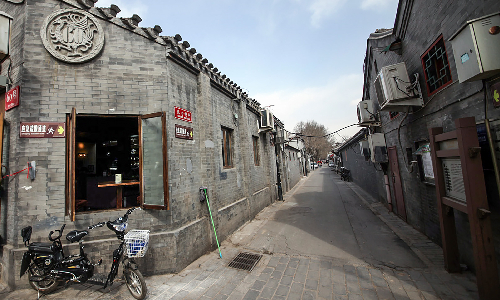
Terra Cotta Warriors and Horses Museum, located in Lintong District, is about 35 kilometers from downtown Xi’an. We need to drive northeast for about 40 minutes to arrive there. The Terra Cotta Warriors and Horses Museum is the subordinate tomb which is also called funerary pits of the Mausoleum of Emperor Qin Shihuang who was the first emperor in China. And until now three funerary pits have been excavated. The total area of these three pits is nearly 20,000 square meters, which is equal to the size of fifty basketball courts, and there are nearly 8,000 terra cotta warriors and horses unearthed from the pits. According to the archaeological data, when the terracotta warriors and horses were just excavated by archaeologists, the bright colors were still partially preserved. Because they were oxidized quickly after being unearthed, the colors we can see now are only the remaining traces of paintings. The terracotta warriors are not only large in scale but also vivid and lifelike. They depict the arrangement of the army formation and reproduce the majesty of millions of soldiers of the Qin Dynasty.
After lunch, we will visit the Big Wild Goose Pagoda. This ancient pagoda of the Tang Dynasty is a unique symbol of Xi’an. There is a pair of stone lions in front of the pagoda gate. Generally, things imported from outside China were always real objects first, and then there were works of art created based on real objects. However, the import of the lion was exceptional. The lion stone carving art was first introduced to China, and then the real lion appeared. The stone lion carving art, as well as Buddhism, was introduced into China from India during the Han Dynasty (202BC-220AD) while the real lion was introduced to China from Persia during the Eastern Han Dynasty (25AD-220AD). When you walk into the pagoda, you can appreciate the charms of Buddhist architecture.
Then we will drive about 8 kilometers north to Muslim Quarter. Muslim Quarter is the gathering area of Muslim people in Xi’an. It is composed of multiple streets. About 20,000 Muslims are living here, maintaining their original religious traditions and habits. The Muslim Quarter offers many Muslim cuisines in Xi'an. It will be gratifying to eat some roast beef and lamb to drive away exhaustion at that time.
About 5 minutes’ walk from Muslim Street will take us to the Great Mosque, founded in 742 AD. Although this is an Islamic mosque, the layout of the Great Mosque is traditional Chinese axis-symmetric. Therefore, we just need to walk along the central axis to visit this Great Mosque, which is very relaxing. The mosque has a total area of 13,000 square meters and can accommodate 1,000 people for worship. Inside the mosque, there is a large archway with a wooden structure built in the early 17th century with a height of 9 meters. You will also see seven stone steles in the mosque, and the inscriptions are in Arabic, Persian, and Chinese. In addition, there are many murals in the hall, which are very well preserved.
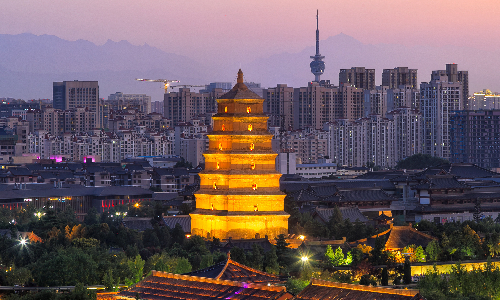
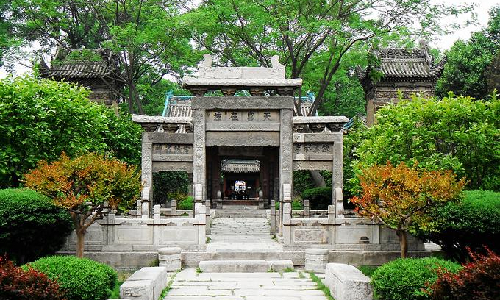
 Chongqing
Chongqing Today we will leave for Chongqing by the estimated China bullet train G2853 9:47/15:03. Our guide will pick you up at the railway station. You will be sent to the dock and board on Yangtze River Cruise nonstop. You will spend several amazing days on the cruise.
After a night on the cruise, we are going to enjoy a new day. This morning, you can get up early and follow the Tai Chi teachers to have some exercises. Tai Chi, also knowns as shadowboxing, is one of the Chinese traditional martial arts. Tai Chi can enhance heart function, improve lung capacity, and so on. Therefore, many Chinese people choose it as an ideal physical exercise.
The cruise keeps moving forward. Along the north bank of the east-flowing turbulent Yangtze River, about 32 kilometers from the Zhongxian County in Chongqing, outcrops a huge steep-sided rock that has a height of 73 meters like a colossal jade seal. On the front of the rock is a 12-story pagoda, which is Shibaozhai Pagoda. It is known as the bright pearl of the Yangtze River. The huge rock and the pagoda are perfectly integrated. In the back hall of Shibaozhai Pagoda, there is a Liumi Cave (Rice Flowing Cave). According to the legend, there was rice flowing from the cave every day which can feed a monk. But the monk thought that the cave was too small, so he dug it into a bigger one to get more rice. However, there was no rice flowing out from then on. Ancient people use this story to remind themselves not to be greedy.
Next, the cruise will stop at Fengdu Ghost City. You can freely choose to buy tickets to visit it. It constructed the world where the soul will go after people's death, combining Chongqing culture with the traditional Chinese ghost culture. In the Fengdu Ghost City, you will see a pair of statues named Heibai Wuchang. In Chinese legend, they are two deities who leads people's soul to the underworld after death. Legend has it that Bai Wuchang is wearing white clothes and his complexion is also pale. Hei Wuchang was wearing black clothes and his complexion is black. Bai Wuchang works during the day. Therefore, the souls of those who die during the daytime will be led by Bai Wuchang to the underworld. Hei Wuchang is in charge of the souls of people who die at night.
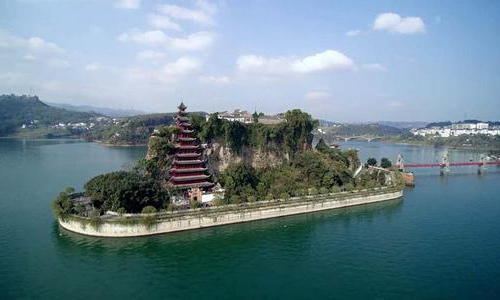
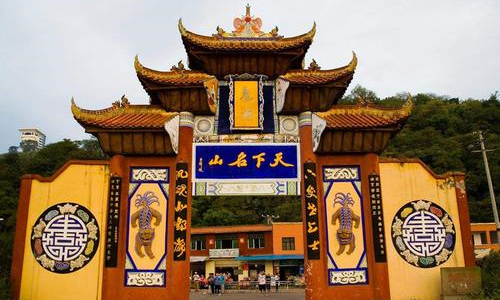
The cruise will continue to spread its sail and catch the wind along the Yangtze River. Today, the cruise will go through the Three Gorges, which is composed of Qutang Gorge, Wu Gorge, and Xiling Gorge, with a total length of 193 kilometers.
Qutang Gorge starts from Baidi City in Fengjie County of Chongqing in the west and Daxi Town ends in Wushan County of Chongqing in the east. With a total length of about 8 kilometers. It is the shortest and the most majestic one of the Three Gorges. The entrance to the Qutang Gorge is Kuimen Gate. It is famous for the precipitous hills on both sides of it. The painting on the back of the 10-yuan banknote is the scenery of Kuimen Gate.
The second section of the Three Gorges is Wu Gorge, with a full length of 45 kilometers. For its deep ravine and short sunshine time, the water vapor here is difficult to diffuse but easy to form clouds in various shapes. The sun shines through the clouds, forming a wondrous landscape-Wu Gorge Buddhist light.
Xiling Gorge is 76 kilometers long and is the longest gorge in the Three Gorges. Xiling Gorge used to be known for its rapids and reefs. Since ancient times, the boatmen have fought against the rapids and reefs here for generations. When they sailed into the Xiling Gorge, the tragedy of the ship breaking on the rocks would frequently happen. Since the construction of the Three Gorges Dam, the torrential river here has become very gentle, and Xiling Gorge has changed from a dangerous place to a scenic spot.
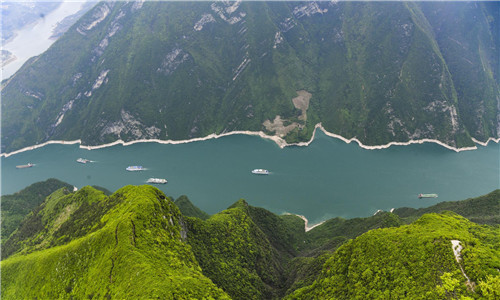
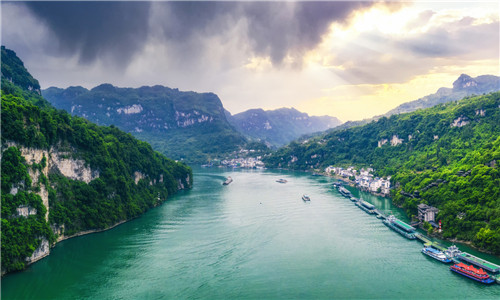
 Shanghai
Shanghai The next stop of the cruise is Three Gorge Dam, a water conservancy project. There is a viewing platform here, shaped like an inverted earthen jar. Standing on the viewing platform, you can overlook the whole project. After visiting Three Gorge Dam, your Yangtze River Cruise comes to an end. your guide will meet you at Visitor Center and bring you to the railway station. You will take the estimated China fast train D2208 14:55/23:05 to Shanghai.
Welcome to Shanghai! You will meet your guide at the railway station and be transferred to the hotel for a good rest. Shanghai is a place known as the Magical City, where Eastern and Western cultures blend. Western buildings and skyscrapers are dotted in the city center, while antique teahouses can be found in the alleys of the old street. Just explore and enjoy the city in the following days.
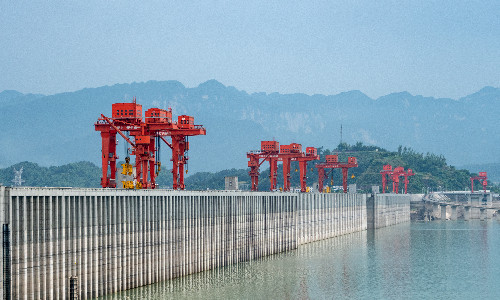
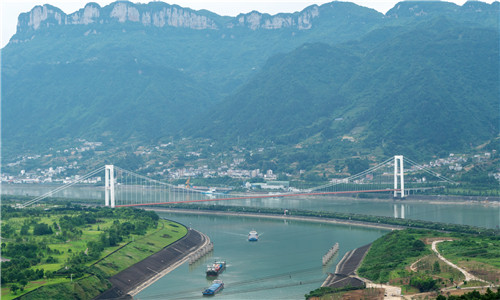
We will spend a nice whole day in Shanghai together, starting by visiting Yu Garden (closed on Mondays). It has a history for over 400 years. It was built by a rich family as their private garden. Since its beauty was well preserved, it became an attractive scenic spot immediately when it was officially opened to tourists. During the visit, you will see two iron lions on both sides of the entrance of a veranda. This pair of iron lions was cast in the Yuan Dynasty (1271-1368), with a history of more than 700 years. The left lion is male and the right one is female. The male lion steps on a ball with its left hoof, symbolizing authority and majesty, while the female lion steps on a baby lion with its right hoof, symbolizing a blessing of the continuation of life. There are many other cultural relics waiting for you to appreciate in the garden.
After that, we will spend about 15 minutes driving southwest to arrive at the Jing’an Temple. Jing’an Temple is one of the most famous temples in Shanghai. It is a quiet place in this busy city. The golden roofs of the buildings glisten in the sun, which looks solemn and sacred. Monks in the temple will get lessons every day, so you may hear monks chanting if you are lucky. Then your guide will take you to have lunch.
We will visit Shanghai Tower first in the afternoon. Before entering the Shanghai Tower, you can see that the outer layer of the building is a layer of glass, and there is a certain distance between the inner building and the outer glass. This outer layer of glass is equivalent to an insulating layer, which can reduce the usage of the air conditioner. Reducing the energy consumption of this skyscraper is conducive to protecting the environment. In addition, the glass is made with glue film added. Even if the glass is broken under the severe hammer test, all the fragments can be firmly attached to the film without falling to the ground. So, it is very safe. Like most other modern skyscrapers, Shanghai Tower is with comprehensive functions. It provides people with a cozy working area as well as restaurants, bars, hotels, shopping centers, and sightseeing platforms. You will go up the 118th floor to overlook this city.
Nanjing Road is one of the earliest and most prosperous streets in Shanghai. Nanjing Road adopts an asymmetrical layout, with a 4.2-meter-wide “golden belt” as the mainline, running through the entire pedestrian street. The “golden belt” is arranged with urban public facilities, such as chairs, shopping pavilions, information booths, billboards, sculptures, street lamps, waste bins, telephone booths, etc., and there are 34 flower beds of various shapes. Nanjing Road is home to more than seven hundred shops along both sides. Nanjing Road is famous for its diversity of goods, so you can get nearly all kinds of stuff on Nanjing Road as a consumer.
Then we will visit the Bund, which is regarded as the starting spot of modern Shanghai. On the west side of the Bund, there are 52 classical buildings of different architectural styles, such as Gothic, Roman, Baroque, and so on. The Bund was the center of foreign trade in Shanghai in the old days, so it has long been regarded as the landmark of Shanghai. The Peace Hotel is one of the famous buildings on the Bund. It was founded by British Jew Elias Victor Sassoon. Built-in 1929, it was originally known as the Huayu Hotel and The Sassoon Building. It is the first modern architecture in Shanghai. The appearance of the whole building belongs to the gothic of Chicago School, and the exterior wall is made of granite. Until now, the Peace Hotel is still one of the luxury hotels in Shanghai. And its luxurious and elegant features attract lots of guests from all over the world.
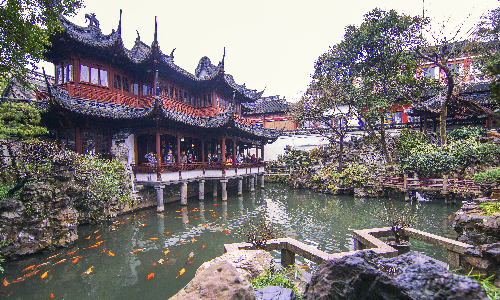
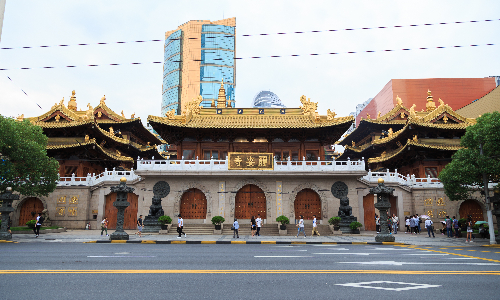
 Guilin
Guilin After breakfast, you will be sent to Shanghai Railway Station and take the estimated train G1501 10:03/18:55 to Guilin. Our guide will meet you at the train station and bring you to the hotel. There is a Chinese old saying: “East or west, Guilin’s scenery is best”, which vividly describes the fame of Guilin’s scenery. The latitude of Guilin is relatively low and the weather belongs to the humid monsoon climate. Generally speaking, Guilin has a mild climate with four distinct seasons and excellent climatic conditions. The annual average temperature is 19.3℃. Just get ready to appreciate the world-renown scenery tomorrow!
We will drive you from Guilin downtown to Mopanshan Pier. Mopan Mountain wharf is 28 kilometers southeast of Guilin. It will take us about 40 minutes to arrive there. We will board on the cruise ship at Mopanshan Pier, and the whole Li River Cruise will be about 4 hours. Most of the time, Li River is so still just like a huge mirror. Therefore, the cruise ship would be the only thing that breaks the water and brings waves to Li River. There are mountains and rocks in kinds of shapes which show you the masterpiece of nature. Visiting the Li River, you will surely hear the story about Sanjie Liu. Legend has it that Sanjie Liu is a girl in Zhuang Nationality. She is very beautiful and loves to sing. Not only that, she is also very kind and brave. She often helps the poor get rid of the bullying of bullies. However, such an excellent girl attracted the local bully’s attention. The bully wants to marry Sanjie Liu. Although Sanjie Liu decisively rejected him, he still used various methods to force Sanjie Liu to marry him. Sanjie Liu was desperate and finally chose to commit suicide by jumping into the river. Until now, there are still many folk songs circulated by local people in Guilin that praise Sanjie Liu.
After 4 hours of Li River Cruise, we will arrive at Yangshuo West Street. The street, with a length of less than 1 kilometer, is paved with stone slabs in a curved S shape. The houses on both sides are elegant and in the style of the Ming and Qing Dynasties. Sloping roofs, gray tiles, and white walls are typical characteristics. In addition, to enjoy the beauty of the traditional buildings, you can buy many souvenirs here, such as calligraphy and paintings, fans, stone seals, wood carvings, antique pottery, etc. We will drive back to Guilin after visiting Yangshuo West Street.
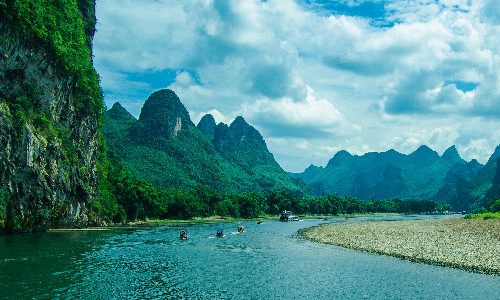
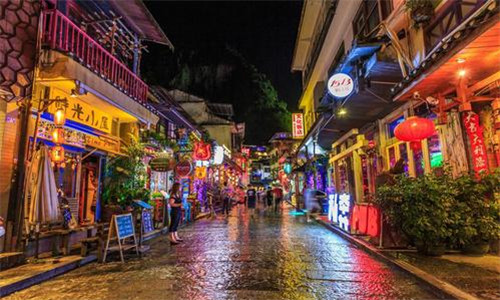
 Hong Kong
Hong Kong Today we have to say goodbye to Guilin. After breakfast, you will be sent to take the estimated train G319 12:38/15:57 to our last stop—Hongkong! Our guide will meet you at the train station and bring you to the hotel. Hong Kong has always been a bustling place. “Shopping”, “luxury”, “fashion”, the modern metropolis has been labeled more and more labels. But what is the real Hong Kong look like? Following our tour guide, let’s explore Hong Kong together.
Today we are going to make the most of this morning to know more about Hong Kong. Firstly, we will go to Victoria Peak. To climb to the top of Victoria Peak, taking the historical and prestigious Peak Tram is an unforgettable experience! The Peak Tram climbs from 28 meters above sea level to 396 meters (about 1,300 feet) along the slope, and passengers can overlook the Victoria Harbour along the way. The slope of some sections of the road is between 4 and 25.7 degrees, so sitting in the cabin, sometimes you couldn’t help leaning back. The tall buildings and dense bushes seem to have fallen aside, which makes you feel amazing. On the top of Victoria Peak stands the Peak Tower, which brings together selected delicacies from different countries. Special shops and interactive entertainment facilities on the Peak Tower allow people of all ages to have fun in the intoxicating scenery.
Secondly, we will visit Repulse Bay, located to the south of Victoria Peak on Hong Kong Island. The bay is crescent-shaped, known as the “Oriental Hawaii”. The English name of the bay is said to be derived from a British Royal warship that was stationed beside the bay to prevent pirates in the past. You will enjoy some leisure time here with the cozy sea breeze.
Finally, we will arrive at the Stanley Market located in the southeast of Repulse Bay. If Repulse Bay represents wealth and luxury, then Stanley Market represents leisure and ordinary life. There are many bars and restaurants here, and it is very pleasant to sit on the beach while drinking and watching the scenery. Besides the clothes here are also popular among the tourists, because they are of high quality and at a nice price.
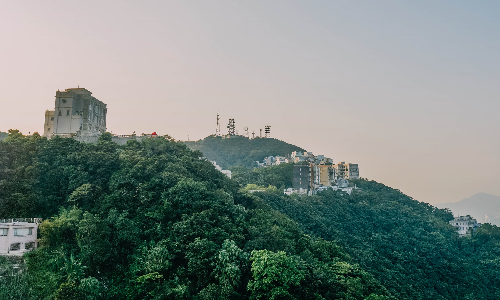
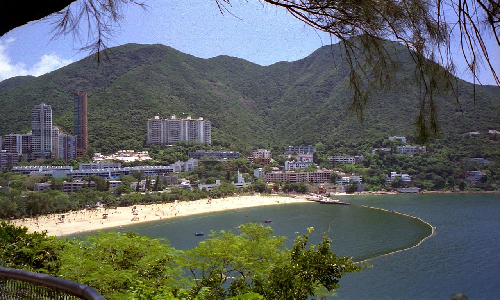
Today your 15 days China train tour comes to an end. It is time to say goodbye. Our guide will transfer you to the airport. Welcome to China again!
Author:Yuxin Yan
Proofreader: Betsy He
| City | Five Star hotel list | Four Star hotel list |
|---|---|---|
| Beijing | Sunworld Dynasty Hotel Beijing Wangfujing | Sunworld Hotel Wangfujing |
| Xi'an | Tianyu Gloria Grand Hotel Xi'an | Sunworld Dynasty Hotel |
| Chongqing | Hilton Chongqing | Yangtze Island Hotel Chongqing Jiefangbei Walking Street Branch |
| Yangtze River Cruise | Victoria Anna | Victoria Anna |
| Shanghai | Ocean Hotel Shanghai | Courtyard by Marriott Shanghai Central |
| Guilin | Lijiang Waterfall Hotel | Guilin Bravo Hotel |
| Hong Kong | Harbour Grand Kowloon | Harbour Plaza North Point Hotel |
 |
![]() About your child or infant, please contact us for a discounted price.
About your child or infant, please contact us for a discounted price.



We started with a few days in Beijing & ended in Shanghai, from where we visited the Forbidden City and Great Wall. In between we visited Terra Cotta Warriors Museum, Panda Base, Shanghai Disneyland.

We had a wonderful holiday in China which will remain long in the memory. China is a breathtakingly beautiful country full of splendid temples and palaces, mountains and rivers, peaceful rural scenes and bustling shopping streets.
 QUICK ENQUIRY
QUICK ENQUIRY